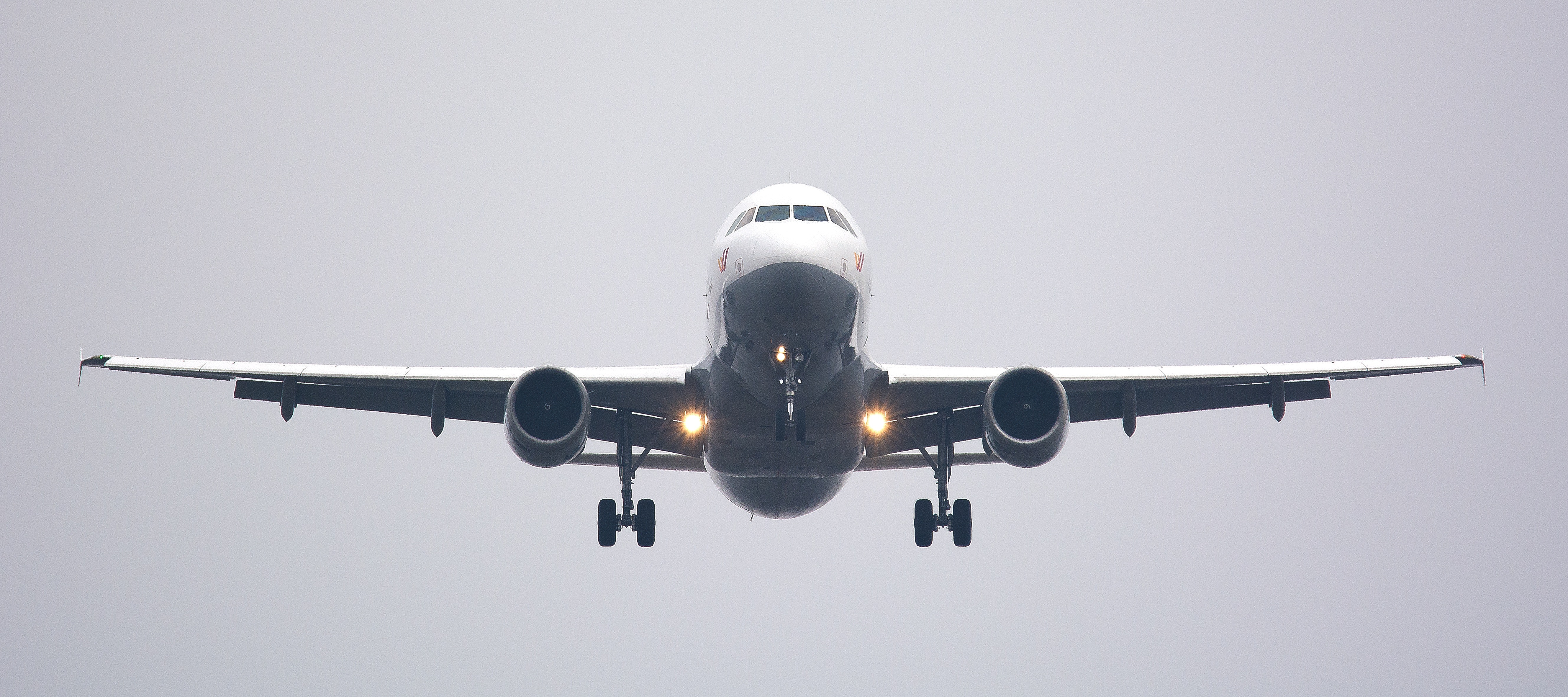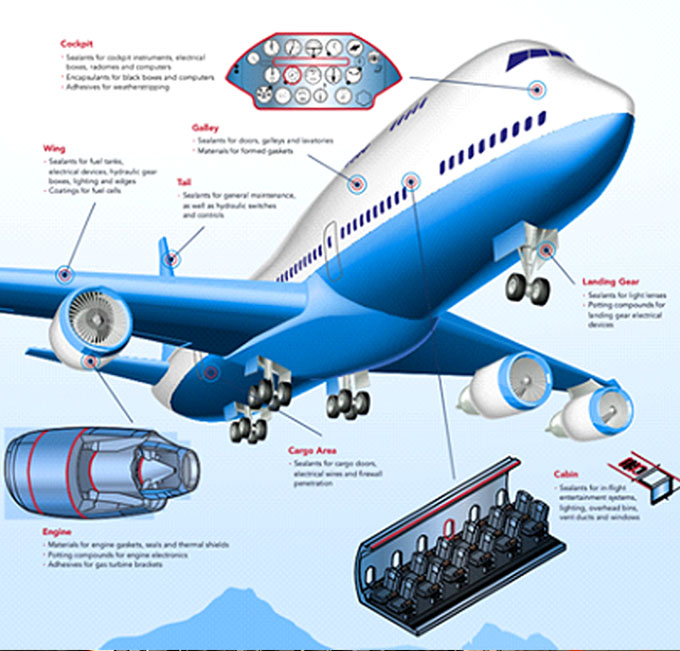
Applications of RTV Silicones in the aerospace industry
The aerospace and aviation industry is one of the most evolving industries thanks to adhesive products. Products such as RTV silicone are driving the development of new and efficient solutions capable of improving aircraft manufacturing and providing increased safety, security and protection.
As the aerospace industry is looking to manufacture lighter and lighter aircraft, and at the same time safer, we at Uniones Adhesivas see adhesives as a key element that is capable of bringing great benefits to the industry. The needs of structural assemblies in the aviation and aerospace industry are met through silicone materials such as: adhesives, encapsulants, filler coatings, which help withstand extreme stresses and temperatures.
What type of silicone to use in the sector?
Room Temperature Vulcanisation (RTV) silicone is being used to achieve this objective. This type of silicone, which is supplied in liquid or semi-liquid form, is susceptible to curing at room temperature. In addition, they can be used both for structural assembly and for treating surfaces in metals that provide greater lightness in the aircraft. In addition, the use of this product generates savings of about one third of the weight compared to other types of materials used.
Where is it applied?
RTV silicones consist of gel and rubber products developed for potting and filling, coating, sealing and bonding applications. They also provide excellent thermal performance, both high temperature stability and lower temperature flexibility.
Silicones can be applied in the protection of terminals and circuits, engine gaskets, aviation lighting systems, cable sealants, ventilation ducts? etc.
In fact, RTV silicones can be found in almost every part of the aircraft:
- Cockpit: In this place we can find encapsulants for black box, sealing for flight instruments, sealant for electrical box, radome sealant and adhesives for weatherstripping.
- Cabin: In the passenger cabin, sealants are used for the in-flight entertainment system, lighting, overhead compartments, ventilation ducts and window assembly. In addition, in the aircraft's bathrooms, sealants are also used for doors and lavatories.
- Cargo hold: In the cargo hold, sealants are used for doors, wiring and firewall penetration.
- Engine: Silicones are found in engine gasketing, molded engine seals, electrical system filler, heat shield, gas turbine clamp adhesives and joint filler compound.
- Landing gear: Landing gear also uses these products for light lenses and landing gear electrical device filler.
- Tail and Wing: In these places the application of silicone is found in hydraulic control sealant, general, electrical devices of the fuel tank and the tank itself. Coating for fuel cell is also found.
Conclusion
Adhesives are becoming products of innovation in many sectors. In this case, RTV silicones are gaining a lot of weight in the aerospace industry due to their properties and the benefits they provide in terms of safety, assembly and protection.
For more information, do not hesitate to contact one of our sales representatives. They will be able to offer you personalized advice and answer any questions you may have.
In addition, if you need more details, we attach two files that may be useful to you:

All comments
1
1
1
1